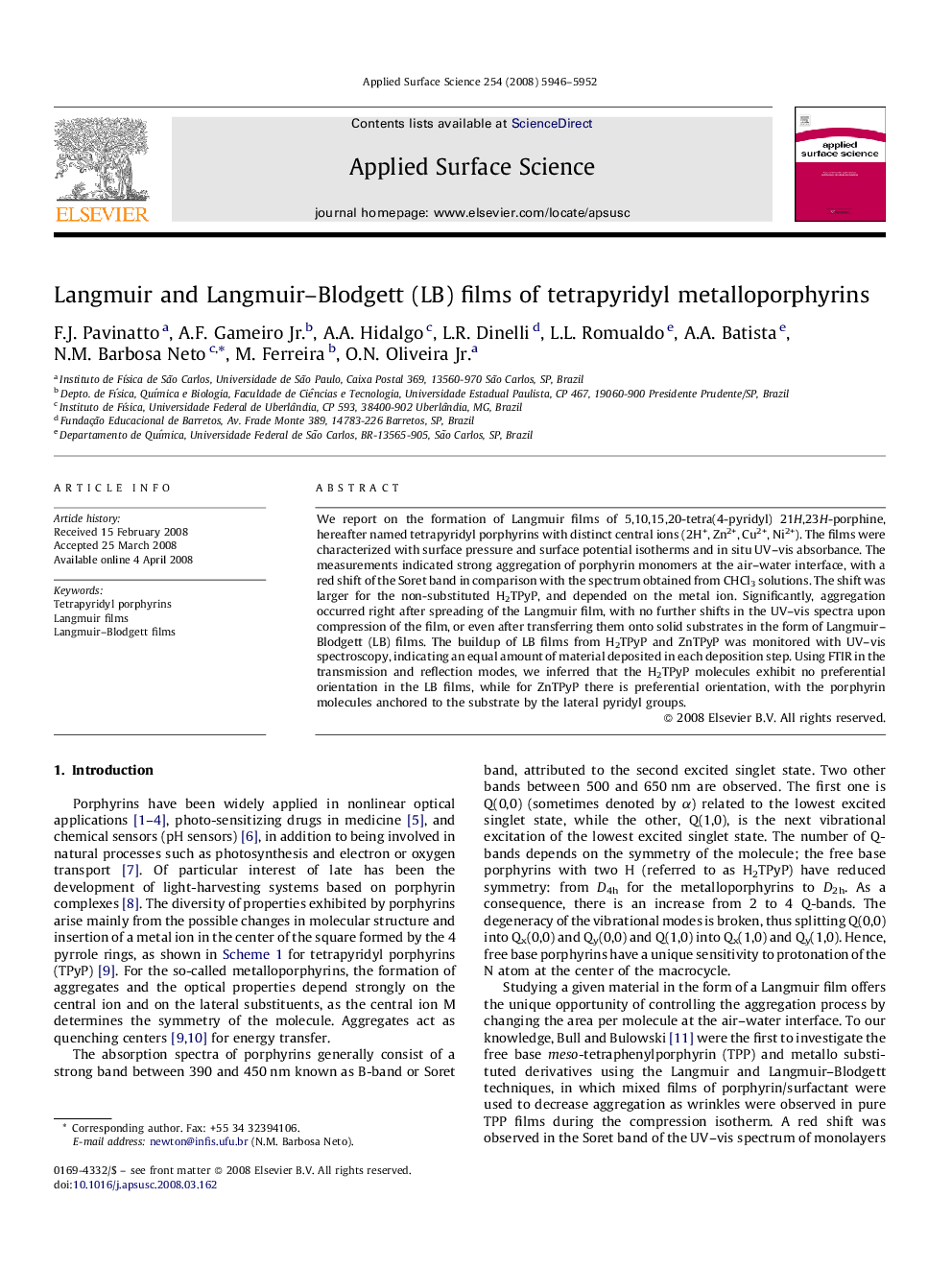| Article ID | Journal | Published Year | Pages | File Type |
|---|---|---|---|---|
| 5362404 | Applied Surface Science | 2008 | 7 Pages |
Abstract
We report on the formation of Langmuir films of 5,10,15,20-tetra(4-pyridyl) 21H,23H-porphine, hereafter named tetrapyridyl porphyrins with distinct central ions (2H+, Zn2+, Cu2+, Ni2+). The films were characterized with surface pressure and surface potential isotherms and in situ UV-vis absorbance. The measurements indicated strong aggregation of porphyrin monomers at the air-water interface, with a red shift of the Soret band in comparison with the spectrum obtained from CHCl3 solutions. The shift was larger for the non-substituted H2TPyP, and depended on the metal ion. Significantly, aggregation occurred right after spreading of the Langmuir film, with no further shifts in the UV-vis spectra upon compression of the film, or even after transferring them onto solid substrates in the form of Langmuir-Blodgett (LB) films. The buildup of LB films from H2TPyP and ZnTPyP was monitored with UV-vis spectroscopy, indicating an equal amount of material deposited in each deposition step. Using FTIR in the transmission and reflection modes, we inferred that the H2TPyP molecules exhibit no preferential orientation in the LB films, while for ZnTPyP there is preferential orientation, with the porphyrin molecules anchored to the substrate by the lateral pyridyl groups.
Related Topics
Physical Sciences and Engineering
Chemistry
Physical and Theoretical Chemistry
Authors
F.J. Pavinatto, A.F. Jr., A.A. Hidalgo, L.R. Dinelli, L.L. Romualdo, A.A. Batista, N.M. Barbosa Neto, M. Ferreira, O.N. Jr.,
